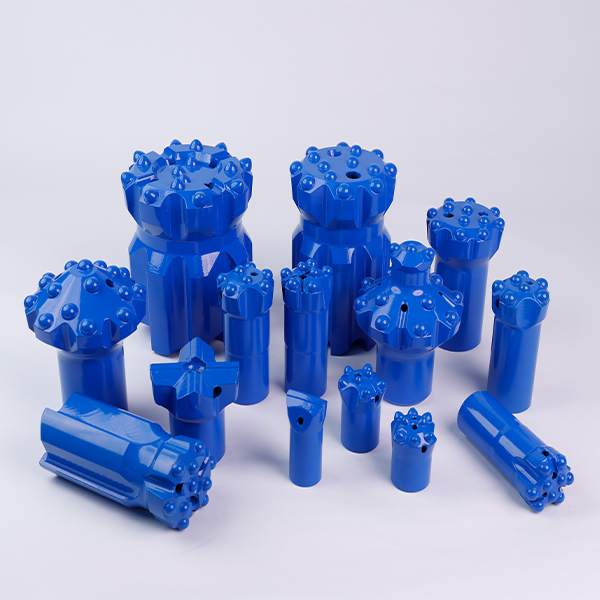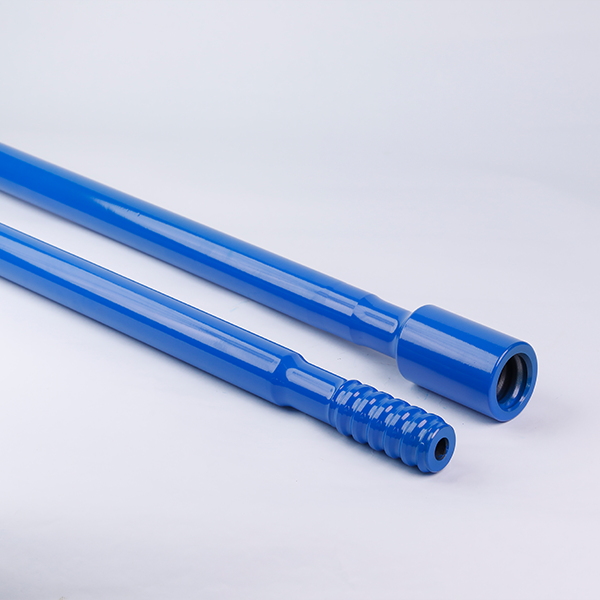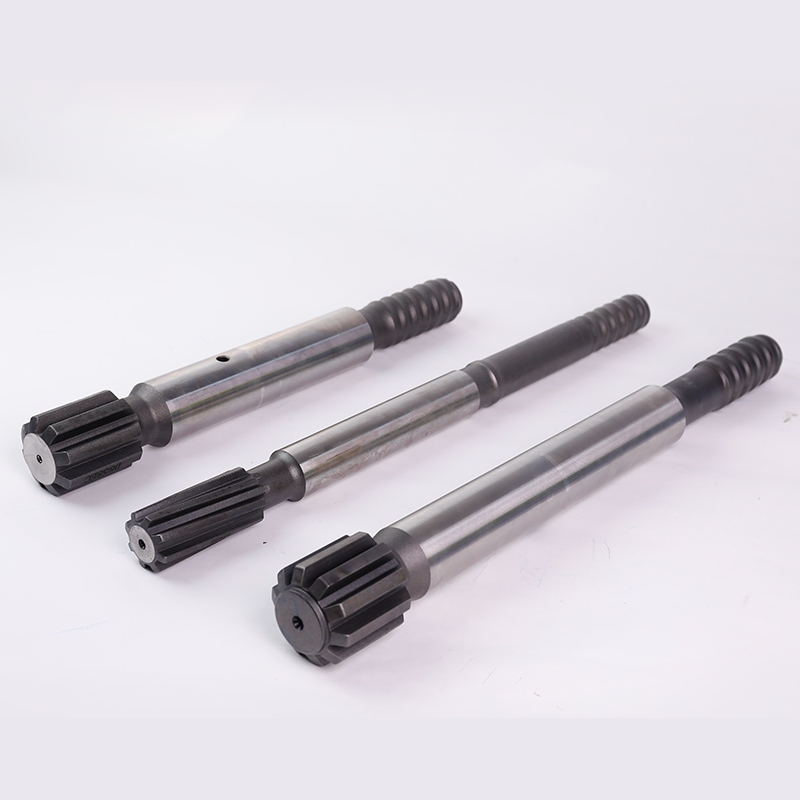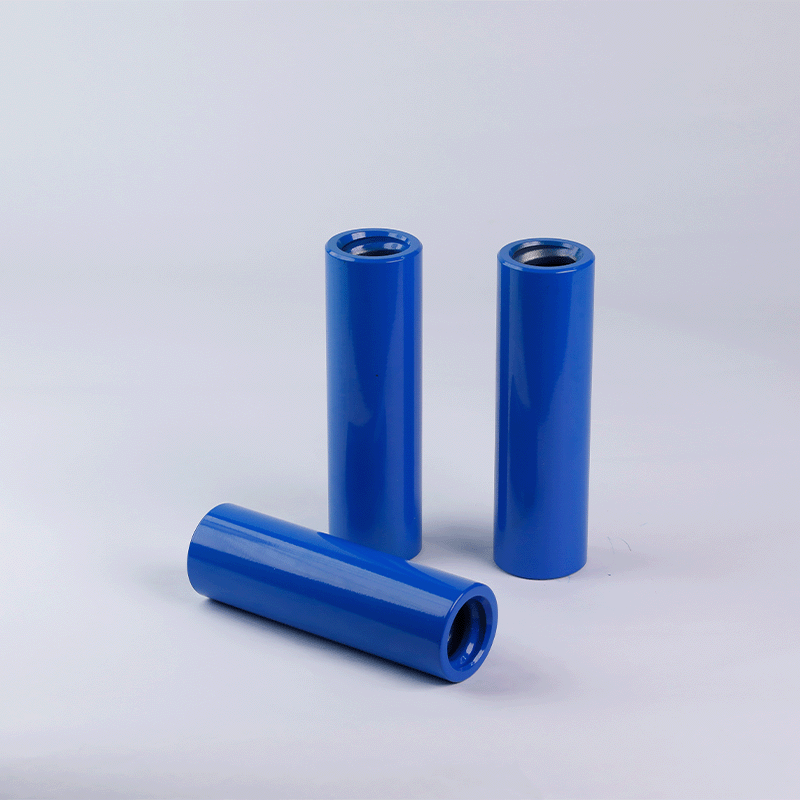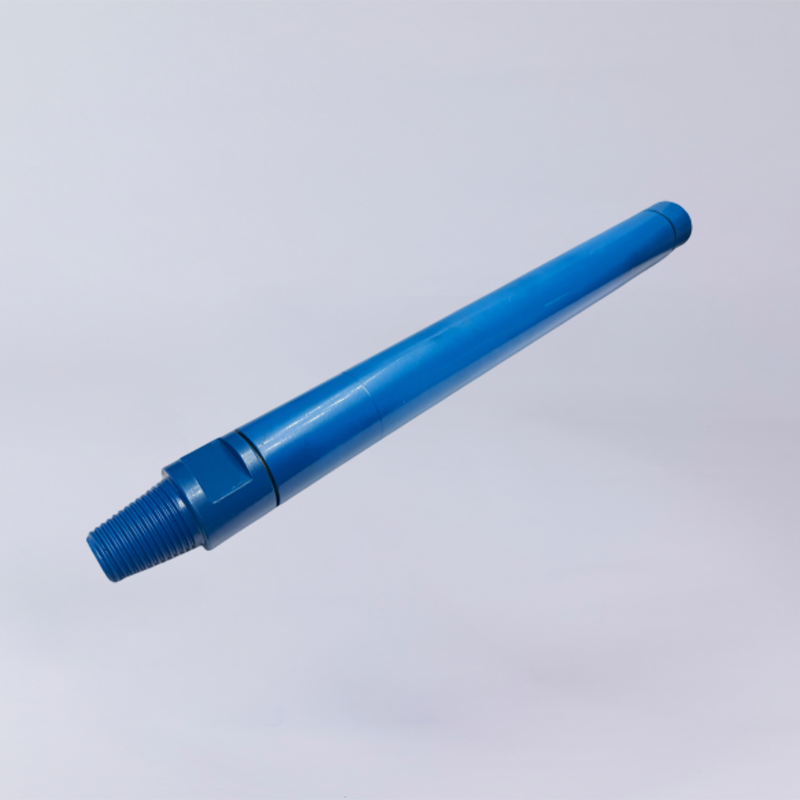Introduction
Button cemented carbide refers to compact, dome-shaped inserts made from a composite of tungsten carbide and a metal binder, typically cobalt. These buttons are engineered to deliver exceptional hardness, impact resistance, and wear resistance, making them indispensable components in rock drilling tools.
In drilling applications, button cemented carbide is embedded into drill bits—such as those used in down-the-hole (DTH) drill bits, top hammer drill bits, and rotary drill bits—to crush and penetrate hard rock formations. Their shape and material properties allow them to endure extreme conditions, including high-impact forces and abrasive rock surfaces, while maintaining tool integrity and performance.
The use of button-cemented carbide plays a vital role in industries like mining, tunneling, quarrying, and geothermal drilling, where efficient rock breaking is crucial to productivity. These industries rely on high-performance carbide buttons to extend tool service life, reduce operational downtime, and achieve faster penetration rates in diverse geological environments.
What Is Button Cemented Carbide?
Button cemented carbide refers to specially shaped carbide inserts—typically spherical, conical, or ballistic—that are integrated into rock drilling tools to enhance cutting and impact performance. These "buttons" are engineered to endure the harsh conditions of rock-breaking operations, delivering a combination of durability, toughness, and wear resistance.
The material itself is a composite of tungsten carbide (WC) and a metallic binder, usually cobalt (Co). Tungsten carbide provides extreme hardness and wear resistance, while the cobalt binder offers toughness and the ability to absorb impact loads. This combination ensures that the buttons can maintain their structural integrity even under high stress, vibration, and heat generated during drilling.
The “button” form factor is not just for ease of manufacturing—it is a critical design feature. Unlike flat or edge-shaped inserts, button shapes distribute stress more evenly and reduce the risk of chipping or cracking during high-impact contact with rock. Their rounded geometry also supports self-sharpening effects during drilling, leading to more consistent performance over time.
In summary, button cemented carbide is a purpose-built solution that combines material science and design engineering to meet the extreme demands of rock drilling in industries such as mining, construction, and energy exploration.
Key Properties of Button Cemented Carbide
Button cemented carbide is renowned for its exceptional material properties, which make it highly suitable for demanding rock drilling environments. These properties are the result of carefully engineered compositions and precise manufacturing processes, designed to balance hardness, toughness, and thermal stability.
Extreme Hardness and Wear Resistance
At the core of its performance is the exceptional hardness of tungsten carbide, ranking around 9 on the Mohs scale and second only to diamond. This extreme hardness enables the carbide buttons to withstand continuous contact with abrasive rock surfaces, significantly reducing wear and extending tool service life. In high-friction drilling conditions, this property is crucial for maintaining cutting efficiency over time.
High Impact Toughness for Percussive Drilling
Rock drilling often involves intense percussive forces, especially in applications such as down-the-hole (DTH) and top hammer drilling. Button cemented carbide is engineered with an optimal cobalt binder ratio and grain size to absorb impact shocks without cracking or breaking. This toughness ensures reliability even under cyclic loading and sudden impacts, preventing premature tool failure.
Heat Resistance and Anti-Deformation Properties
Drilling generates substantial heat due to friction and compression. Cemented carbide maintains its structural stability at elevated temperatures, resisting thermal softening or deformation. This heat resistance allows the tool to retain sharpness and dimensional integrity during prolonged drilling operations, especially in deep or high-pressure environments.
How to Choose the Right Grade and Shape?
Selecting the right grade and shape of button cemented carbide is critical to achieving maximum drilling efficiency, tool longevity, and cost-effectiveness. Different drilling conditions and rock types require tailored carbide specifications to optimize performance.
Matching Button Shape to Rock Hardness
The geometry of the carbide button plays a key role in how it interacts with rock:
- Spherical buttons are ideal for very hard or abrasive rock. Their robust shape distributes impact evenly and resists breakage.
- Ballistic or parabolic buttons offer faster penetration in medium to soft rock, thanks to their sharper geometry, though they wear more quickly in abrasive conditions.
- Conical buttons strike a balance between impact resistance and penetration rate, commonly used in general-purpose drilling.
Choosing the correct shape ensures that the tool not only penetrates efficiently but also avoids premature failure.
Grain Size and Cobalt Content Considerations
- Fine-grain carbide improves hardness and wear resistance, making it suitable for high-precision or abrasive applications.
- Coarse-grain carbide increases toughness, making it better suited for shock-intensive environments.
- Higher cobalt content enhances toughness but reduces hardness, while lower cobalt content does the opposite. The right balance depends on whether the drilling requires more resistance to wear or to impact.
Application-Specific Recommendations
- Hard rock (e.g., granite, basalt): Use spherical buttons with coarse grain and higher cobalt content for durability under high stress.
- Medium rock (e.g., limestone, schist): Ballistic or conical buttons with standard grades work well, offering a balance between toughness and cutting speed.
- Soft rock (e.g., sandstone, claystone): Sharper buttons with fine grain and lower cobalt content can achieve higher penetration without excessive wear.
Tooth Shape of Cemented Carbide Button Bits
The tooth profile of the cemented carbide button bit is divided into four shapes: hemispherical button, conical button, parabolic button, and wedge button.
1. Under the condition of sufficient impact power of the hydraulic rock drill, the hemispherical button has a high energy utilization rate, good rock breaking effect, and the carbide button is strong and wear-resistant, which is more suitable for oil well drilling. Hemispherical buttons are used to inlay rock drilling percussion bits, down-the-hole drill bits, and oil drill bits, suitable for very hard rock formations.
2. The carbide button of conical button shape is easy to drill into the rock, and the drilling speed is higher. Conical buttons work more effectively when the impact energy is insufficient (the wind pressure of the wind power rock drill is insufficient, the performance of the hydraulic rock drill changes, etc.), but the abrasion resistance is poor. The button used to inlay rock drilling percussion bits, down-the-hole drill bits, and oil drill bits, suitable for hard rock formations.
3. A parabolic button is a crown shape between a conical and a hemispherical button. It is mainly used to inlay down-the-hole drill bits and roller cone bits, and is suitable for medium-hard rock formations.
4. Wedge-shaped button is mainly used to inlay special-shaped DTH drill bits and roller cone bits, and is suitable for soft rock formations with high speed and low tooth breakage.
Conclusion
Button cemented carbide plays a pivotal role in rock drilling operations, ensuring that tools can withstand the harshest environments and deliver consistent performance. Its exceptional hardness, impact resistance, and heat stability make it an indispensable material for applications across industries such as mining, tunneling, and quarrying.
The impact of button cemented carbide on drilling efficiency is profound—its ability to endure high forces and abrasive conditions allows for faster penetration, reduced downtime, and longer tool service life. This, in turn, translates into lower overall drilling costs, improved safety for operators, and higher productivity for companies.
By choosing the right grade, shape, and supplier of button cemented carbide products, industries can significantly enhance their drilling operations and maintain a competitive edge in challenging rock formations.

